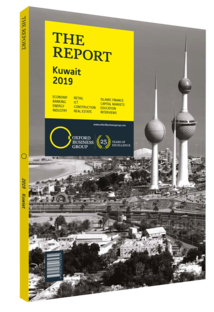Mohammad Y Al Hashel, Governor, Central Bank of Kuwait: Interview

Interview: Mohammad Y Al Hashel
What challenges does the sector face as it works to implement Basel III requirements and International Financial Reporting Standards (IFRS) 9?
MOHAMMAD Y AL HASHEL: The Central Bank of Kuwait (CBK) has already implemented the key elements of the Basel III reforms and our banking system is well above each benchmark set under the framework. For example, the capital-adequacy ratio (CAR) of the industry stood at 18% in June 2019, well above the Basel III requirement.
Furthermore, the sector’s leverage ratio stood at 10.3% – substantially higher than the 3% global benchmark – reflecting the strong capacity of Kuwaiti banks to extend credit. We have also strengthened banks’ capacity to withstand liquidity stress and made their funding structure more stable by implementing a liquidity coverage ratio and net stable funding ratio; in both cases our banks are above the applicable benchmarks.
Taken together, these indicators highlight not only the sector’s compliance with Basel III rules, but also underpin the sector’s capacity to effectively perform the role of financial intermediation even under conditions of stress. Meanwhile, the impact of the adoption of IFRS 9 has been fairly limited, given the high level of provisions our banks already have in place. This has allowed us to introduce the IFRS 9 framework in parallel with our domestic provisions, with banks required to comply with the higher of the two benchmarks.
How can the CBK boost credit and better align lending criteria with the needs of non-oil sectors?
AL HASHEL: Ensuring healthy credit growth has been a key consideration informing both our monetary policy and our prudential regulation. The CBK has aimed to strike a balance between healthy private sector credit growth and preserving the attractiveness of the Kuwaiti dinar as a currency for domestic savings. Indeed, to encourage private sector credit in Kuwait, we skipped three of the four rate hikes undertaken by the US Federal Reserve in 2018. In terms of prudential regulation, in late 2018 we revised our earlier instructions on housing and other consumer loans to reflect the changing needs and greater borrowing capacity of households. Specifically, we increased the maximum limit on housing and consumer loans to 25 times the net salary of the borrower or a maximum of KD25,000 ($82,300). These measures were helpful in boosting credit growth in 2018. For example, domestic credit by Kuwaiti banks was up 4.9% in 2018, compared to 3.9% in 2017. Meanwhile, lending to households increased by 7.8% in 2018, although the impact of our revised regulatory instructions will be evident in 2019.
Furthermore, the CBK has continued to provide a number of incentives to encourage Kuwaiti banks to lend to small and medium-sized enterprises (SMEs). The CBK offers a risk weight of 75% for the financing of SMEs, compared to the standard risk weight of 100%. In addition, the government has provided funding and other forms of support through its National Fund for SME Development. Nevertheless, the overall SME segment remains challenged by certain operational and structural obstacles, which have so far prevented it from reaching its true growth potential.
Describe how Kuwaiti banks have fared in terms of the issue of non-performing loans.
AL HASHEL: Indicators of the asset quality of our banks reflect the best picture we have had in over a decade. Notably, both the gross and net non-performing loan (NPL) ratios have steadily declined for the ninth year in a row. Moreover, the gross NPL ratio, on a consolidated basis, dropped to a historically low level of 1.6% in 2018, well below the 3.8% observed in 2007 before the global financial crisis. The impressive progress in bringing down the NPL ratio over the last decade is particularly evident if you compare the current NPL ratio of 1.6% with the 11.5% ratio recorded in 2009. The net NPL has also been experiencing a receding trend since 2009 and reached a record low of 1.1% in 2018.
You have reached the limit of premium articles you can view for free.
Choose from the options below to purchase print or digital editions of our Reports. You can also purchase a website subscription giving you unlimited access to all of our Reports online for 12 months.
If you have already purchased this Report or have a website subscription, please login to continue.

